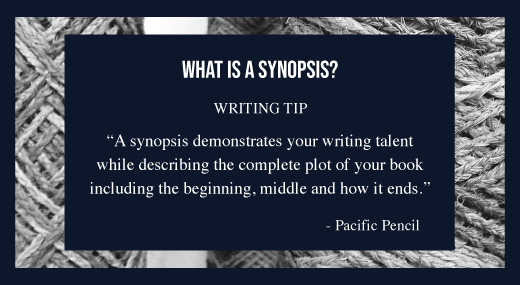Writing a synopsis

When you submit your book to a publisher for consideration, the standard process is to include a synopsis and the first two or three chapters of your manuscript as a sample.
Take some time to write and re-write your synopsis. Remember, this is the first impression that you will make on the editor – and it really counts.
So, what even is a synopsis?
A synopsis demonstrates your writing talent while describing the complete plot of your book including the beginning, middle and how it ends.
Tailor your synopsis to the type of book you are submitting.
Fiction
For fiction submissions, your goal is to adequately outline the plot without giving away too many details, or twists.
A good synopsis is concise and discloses enough of the story to give the editor an idea of its direction, while withholding enough juicy details to keep the editor interested.
There is no need to outline each plot point or give a detailed description of each character. At the same time, your synopsis should contain more than a short blurb.
Non-fiction
A non-fiction synopsis should be quite detailed and give a clear overview of the book’s central argument or aim.
You might want to include a table of contents and a comparison with other texts currently on the market that discuss similar subject matter. Use this comparison to outline how your manuscript is different and what people can expect to learn from reading your work.
A common synopsis structure
Begin by introducing the protagonist and the problem that sets them on the pathway of your plot. This is also when you can describe the setting. Cover the basic who, where, when and why. Include any vital elements of backstory to ensure your ending will make sense to the editor.
The middle section of your synopsis must be strong and well-paced to keep the editor interested. Focus on the plot and show how the events begin to change the protagonist.
In the final section, reveal the ending with a logical and exciting climax. Describe how the characters have developed and what they have learned as they arrive at the final moment of the plot.
Helpful tips
· Search online for good examples of a synopsis to compare yours to.
· Show your synopsis to your proof-reader for their opinion.
· Write in the present tense and keep your synopsis under three pages.
· Check for grammatical and spelling errors.
· Be true to your voice and style.
-- -- -- -- -- -- -- --
We welcome questions or feedback about this topic.
Please get in touch via our contact page.